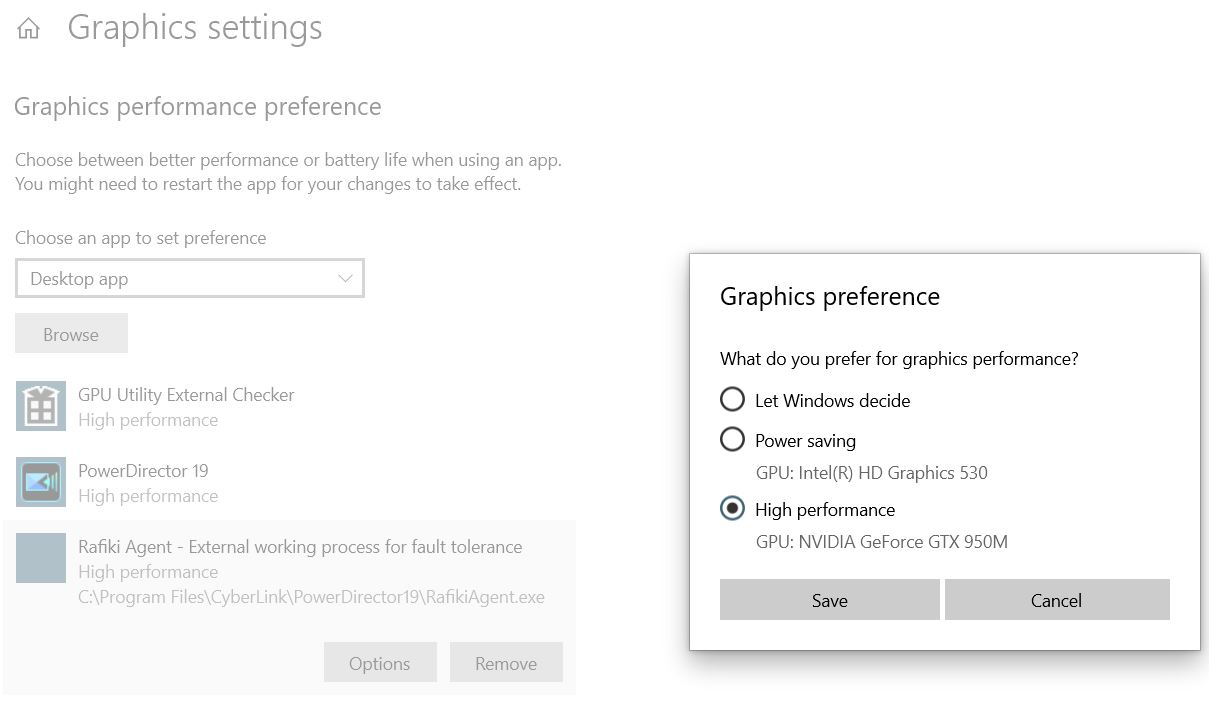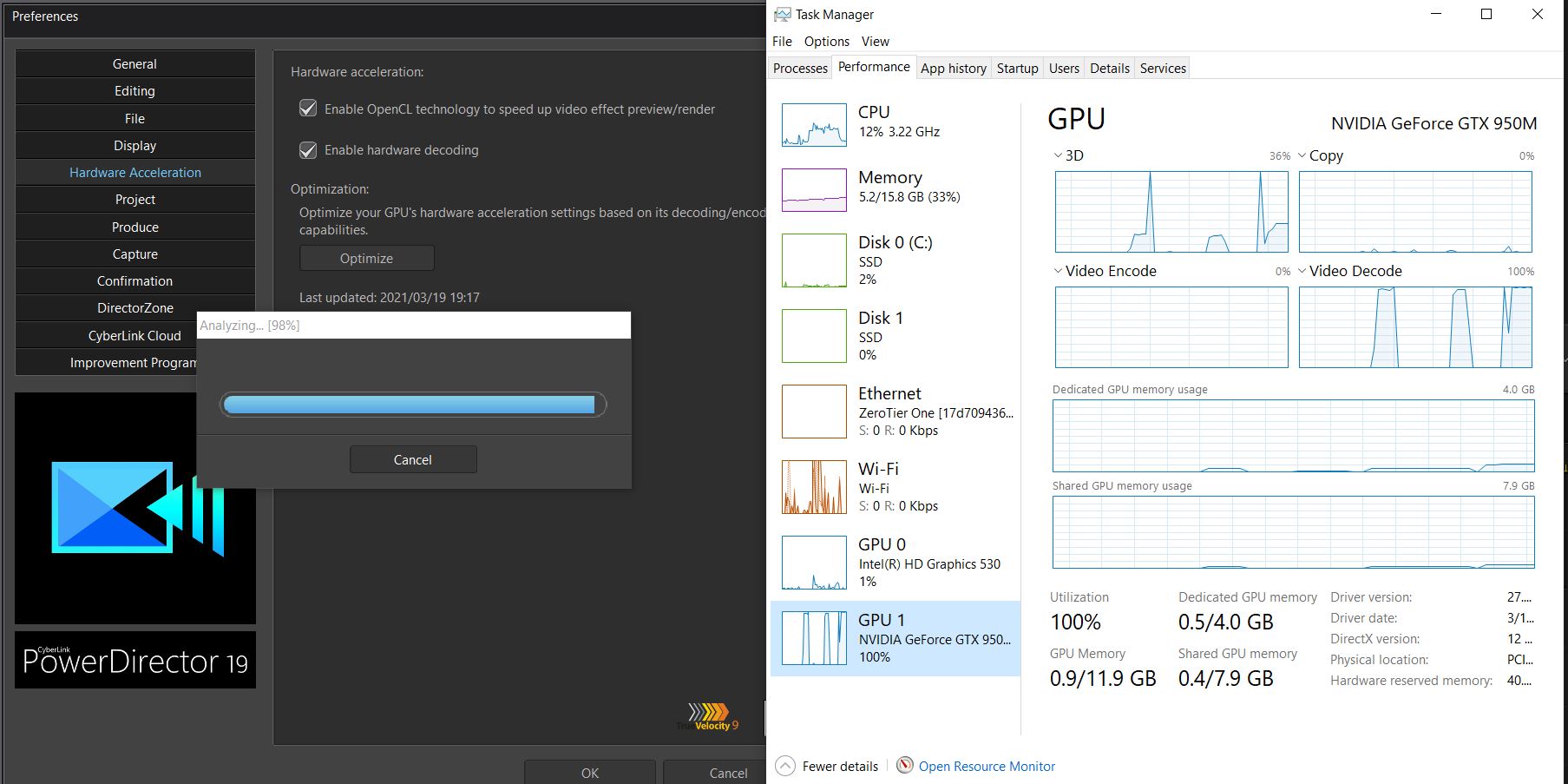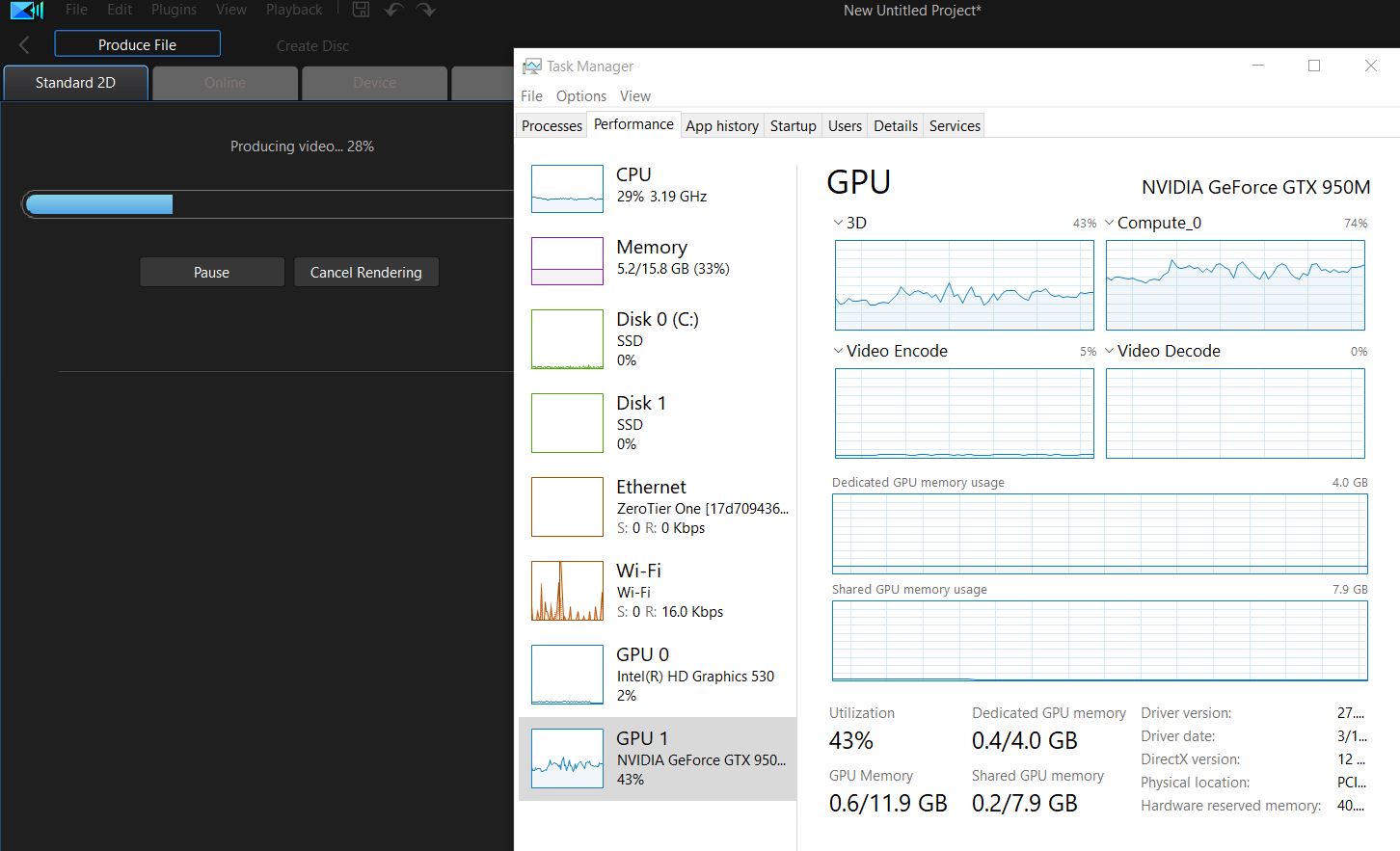|
|
I have a video from my dashcamera and I want to blur a licenceplate of the car in front of me. The distance between cars changes, and the apparent size and location of the car/plate on the screen changes.
I am trying to use the motion tracker to track that plate and it's all over the place. It doesn't track the changes in size or position, it kind of tracks the object... but not very convincing. Error of tracking is too big.
Did anyone had success with this? Is there something special to do to keep this tracking tighter?
|
|
|
Quote
Is anyone else using some other software to capture?
USB sucks for real-time data transmission. The chip that the actual dongle uses contribues to that, by the mode of data connections and it's drivers capabilities.
USB transmission modes:
- Asynchronous – The ADC or DAC are not synced to the host computer's clock at all, operating off a free-running clock local to the device.
- Synchronous – The device's clock is synced to the USB start-of-frame (SOF) or Bus Interval signals. For instance, this can require syncing an 11.2896 MHz clock to a 1 kHz SOF signal, a large frequency multiplication.
- Adaptive – The device's clock is synced to the amount of data sent per frame by the host
I use a firewire (IEEE 1394, ilink) connected encoder and it's perfect. Usually that is my older Canon miniDV camcorder, that has analog S-Video and Composite inputs (US higher end models have that, EU models don't). I have an extra firewire card in my computer.
|
|
|
Quote
Hello everyone, my uncle likes to use powerdirector 19 ultra. He would like to work in 4K soon.
For this he would like to buy a new PC after many years.
It's planned:
32GB G.Skill Aegis DDR4-3200
PureBase 500DX
be quiet! Dark Rock 4 Tower Kühler
Ryzen 7 5800X
MSI MPG B550 Gaming Plus
500GB Samsung SSD 980 ( for System)
1000GB Corsair Force Series MP600 Pro (for Project)
550 Watt be quiet! Straight Power 11
Which GPU would you recommend?
The codec he uses is H.265 / HEVC
Thanks Alex
Alex,
1. Instead of an SSD for project files, I would strongly recommend spending the same amount of money on a bigger HDD. The read/write speeds encountered in editing the videos encoded in HEVC will be well under the capacity of a modern 7200rpm HDD. SSD is just a waste of money here.
2. As video cards, the latest harware encoders are the one found in nvidia gen 20xx and 30xx cards. Get a GTX 1650 Super if you can find one and will be sufficient. All of them have the same encoder, so don't try for the best "gaming" card.
https://en.wikipedia.org/wiki/Nvidia_NVENC
https://developer.nvidia.com/video-encode-and-decode-gpu-support-matrix-new
3. The CPU will be used the most, generally not all effects or transistions are GPU capable, so they will use the CPU. Here I feel that 5800X can be a bit of a limiting factor and the extra oomph provided by more cores will be definitelly a good thing. 5950X for the win if you can suffer the price penalty!
4. Power supply needs to be at least 750W if not better. Don't skimp on that, it can take out the system!
5. Ryzen 7 likes the RAM to be at 3600. If that's not breaking the bank, it would be a good addition.
6. I would go with a X570 motherboard for those new CPU's.
|
|
|
|
Try rendering it at 60fps. Any modern "HDTV" should be able to play that, they are just big smartphones after all....
|
|
|
Quote
The results is good, but you will remember probably that holding your phone in the correct position the next time is even better :
This way, the zoom will reduce the quality of a HD video to the levels of a 1080x607 pixels video, barely above SD.
I would not call that "good", but only "acceptable".
That's why holding the phone correctly is so important!
|
|
|
Quote
FTA (Free to Air) broadcasting is not encrypted. Even if the content is copyrighted, you are allowed to edit it for your own usage.
But maybe the recording on that DVR is encrypted for their own reasons.
I am using Windows Media Center as DVR and those files can be played only on that computer (can be streamed to XBOX or another Windows computer, but they need to be "read" in the original device). Even if they came from OTA.
There are programs that can "transfer" them in another format, but that's that.
|
|
|
Quote
These files that I'm trying to edit, and convert to a different format are nothing more than hour-long television programs from PBS, NOVA in particular, science show about the solar system, etc., that I recorded directly to a hard drive from my ChannelMaster 7500 OTA DVR. The files are unbelievably huge considering it's just an hour-long program, and I have to use a LINUX reader to get them from that external HD to my computer.
Maybe they have some kind of encryption added on those files, so the files on the DVR cannot be copied.
Legally, I don't think it's allowed to mess with them anyway, but that's something else.
|
|
|
Quote
the picture that is rotated in vertical axis, must change automatically in size in any degree of rotation
I don't undestand what you mean by that. You mean at an random angle? And to be expanded to fill the frame?
|
|
|
Quote
Meanwhile, I don't see any difference at all in the MediaInfo audio specs between the two clips.
You mean on HDD? Because YT will re-encode the video and audio regardless what you feed it.
Their recomandations for audio are actually not very usefull - they recommend to encode audio at 48kHz, but if you DL any clip from YT it will have audio at 44.1kHz.
|
|
|
Quote
Please could you advise me on how best to produce a file to make it fit on a standard DVD (4.7GB)? How can I best compress a video (I have my friend's wedding video to put onto DVD which is almost 2 hours) without losing the quality of the item? Is there any easy way to split the footage in two if I really have to, or do I have to do it manually and fade in, fade out, etc.?
Thanks very much for your help as this is taking a LONG time, and I'm sure it's much longer than I need to spend on it.
To maximize the quality use a dual layer DVD (8.5GB) for a two hour event.
Or better just burn a HD video, H265 encoded, as a plain file on that 4.7 GB DVD (or on a memory stick) that can be player in a PC or transfered on any digital device - that will give better quality than than the SD quality of DVD (H262/MPEG2). Nobody really uses a DVD Player anymore.
|
|
|
15"i9-10885H for $1800 or 17" i9-10885H for $2250. Under 5 lbs.
https://www.dell.com/en-us/shop/dell-laptops/sr/laptops/intel-core-i9?appliedRefinements=14158
You have to know that laptops are the worst long-time purchase? You can't upgrade them to keep up with newer parts, basically you can only put a bigger drive in them and some more RAM. Screen is fixed, CPU the same...
A desktop doesn't suffer from any of that.
|
|
|
Quote
DirectorSuite 365 | Power Director 19/365 | Photo Director 12/365 | ColorDirector 365
Win10 Home | Intel(R) Core(TM) i7-6700HQ CPU @ 2.60Gz, 2601 Mhz, 4
Core(s), 8 Logical Processor(s) | NVIDIA GeForce GTX 960M | Intel HD
Graphics 530 |Dell 0H0CC0 | 119GB SanDisk X400 M.2 2280 128GB (SATA
(SSD)) | 931GB Seagate ST1000LM024 HN-M101MBB (SATA)| NVIDIA Virtual
Audio Device (Wave Extensible) (WDM) | 16.0GB Dual-Channel DDR3 @ 798MHz
The i7-6700HQ is still a decent CPU, performance wise is at about 65% of newer Intel CPU's.
Are you able to select the GTX960 while encoding?
|
|
|
Jeff, thanks! I didn't had updated my PD in a while.
As a side note, I never click on the "Download" links, because that, on my browser, requires saving somwhere on the disc. Hate that.
I recommend that, after attaching a picture in the post, and saving the post, you can right click on that post pic, and copy it's link.
After that you can edit the post and insert the picture in the post using the tool in the top row, paste the link in the "Source". Like this:

|
|
|
It was just a quick test on a laptop with nvidia dGPU that I have around. Not my main editing machine... and on workstation I don't have that option.
That's for traveling - I can play video games on my home PC and stream them on that laptop via Moonlight or Steam.
|
|
|
Quote
Hello.
I m sorry I dont find the Autodetected you re saying.
I have produce another video 116MB and the produced video its 118 Mb , comparing the files: https://prnt.sc/10rgnam
Why the data rate is different , I have choose Best Matched profile , is that compromise the quality of the video ?
Thanks
Sorry I called "Best Matched"... "Autodetected". Best Matched doesn't mean "identical".
Try to edit that profile manually (custom profile), with the same video and audio settings, if you think that quality suffered.
I doubt you can see a difference though, not at that video data rate. Do a capture of two pause screens, zoom at 100%, and see if they look different.
|
|
|
Quote
That means its making a compress or what?
Yep, look into the file you provided at the video data rate.
You can adjust it from the "Autodetected". A good way to check the original file, right click on it inside PD and select "View Properties".
|
|
|
You need all 3 of those programs in my first picture to be selected on "High Performance". You are missing the "GPU Utility Checker".
On my desktop, this is not an issue, because I have only a dGPU.
|
|
|
After many trials, it looks like finaly Windows 10 enabled PD to use, on my older laptop, the nvida GTX950M instead of the Intel GPU (HD530). This might be useful to others.
Firstly, the graphic settings for GPU affinity are now managed by Windows, not by nvidia. By default, for PD, it chooses the power saving Intel GPU. So I have tried to add the PD executable to the list. Didn't work, I have added the GPU Utility Checker. No luck. Then, while running the "Optimization" feature in PD, I snooped to see what exe is used. I noticed the "Rafiki Agent" being called, so I have added that to the list too.
That was the winning ticket! Add all three of them like in my picture and you'll be good to go.
Now the redering on the test laptop is done with nvidia hardware encoder, not intel one.
More, contrary of everything I saw on my desktop, it looks like Cyberlink switched back to using the CUDA cores for h264 encoding for gaming laptop situation!!! That's a great step ahead, but their instructions how to use it are lacking.
As a note, I don't have hardware h265 encoding available in PD on this laptop with nvidia switched on.
Since my GTX950M is a GM107 based card, it has NVENC capable of h265.
So I think this is a limitation of Cyberlink's CUDA encoding software.
As a comparation, the Intel HD530 was capable of hardware encoding in h265, by using the 3D cores inside that GPU.

This was the usage during PD "Optimize":

Now I have nvidia GPU encoding (h264, 4K), using the CUDA cores.

Former setting, with Intel doing the hardware encoding (h265, 4K here), using it's 3D cores. Half slower than nvidia, but at least can do h265):

|
|
|
@iplocker
My "winning" solution:
https://forum.cyberlink.com/forum/posts/list/84770.page
With nvidia it took only 3 min 30 sec to render in H264.
Funny, it looks like the NVENC is not used anymore by PD.... is back to 3D cores encoding for h264 wih this profile.
|
|
|
Quote
...now searching how to enable GPU of the card which I hope it will reduce the rendering time by a lot !!
That was a long-standing issue with gaming laptops that use nvidia Optimus for games.
https://en.wikipedia.org/wiki/Nvidia_Optimus
That Optimus software passes only the 3D core to the games, but it will not pass the NVENC block to a video editor software.
So that's why, even if you "dedicate" the nvidia GPU to PD, the software wil not see the hardware accelerated encoding block (NVENC).
I have read that one of the latest updates of Power Director managed to go around this issue, but when checked on my older laptop, with GTX950M, that didn't happen.
Workstation laptops can have a hardware multiplexer switch on board that allows the BIOS to shut of the Intel GPU completely and then the dGPU nvidia has full visibility to video editors like PD.
On that old laptop, with i7-6700HQ CPU (HD Graphics 530), combining those two clips took 6 min 30 sec, using intel QuickSync (GTX950 was not used). See usage below.

|
|
|
Quote
Hello.
Can somebody gave me the settings I need to set to export the same 4k video I m getting from my GoPro camera?
The only way to keep the SAME video quality is... not to edit it at all.
Otherwise, all the compressed video formats will have some level of generational loses, because they are all encoded lossy. Some formats are better at that, some are worse. The more compressed a video format is initially, the more artifacts you can expect to have after editing.
Some people use intermediary formats for editing, that yeld better results on maintaining quality between succesive edits (but they use huge intermediary files).
Using the SVRT does minimal changes to the video, but can be used only if the editing is limited to cutting and clipping of original video. It will change the video around the edges of the clips, because it has to "match" the two video streams control points.
PS: The title should say "lose quality". "Loose" means something else.
https://www.merriam-webster.com/dictionary/lose
https://www.merriam-webster.com/dictionary/loose
|